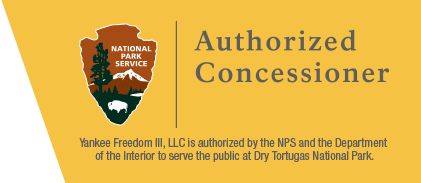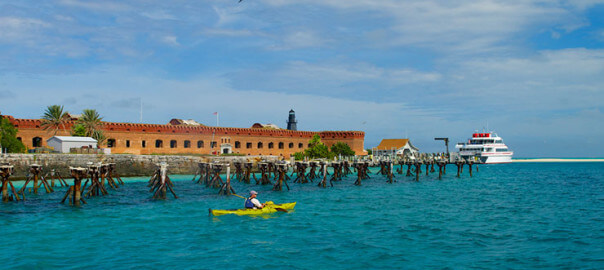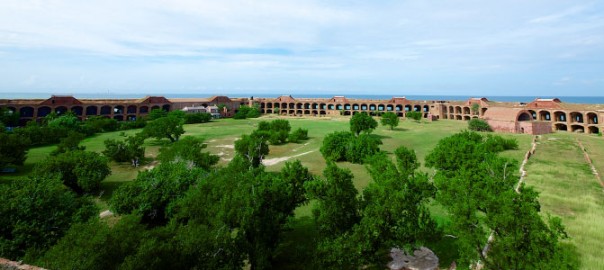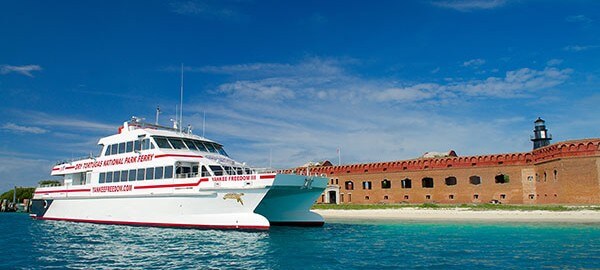Courageous African Americans Honored
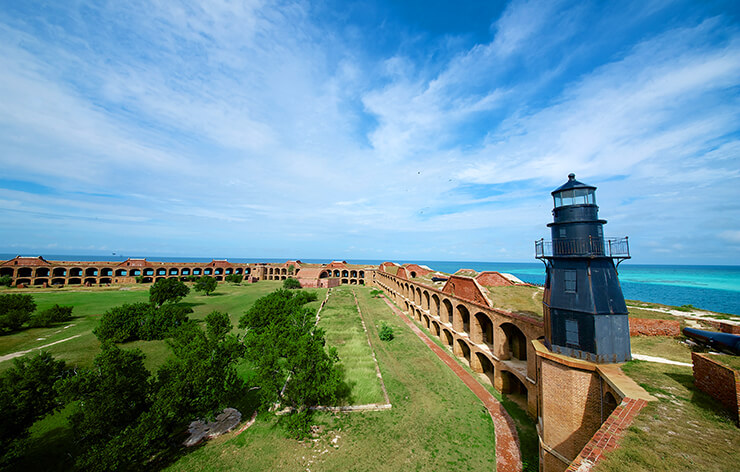
Official Newspaper of Dry Tortugas National Park, Vol. 2, Number 1
National Park Services
Department of Interior
Shortly after midnight on July 10, 1847, seven enslaved African Americans fled Garden Key. The courageous efforts of these men were recently honored by the National Underground Railroad Network to Freedom Program. The Network to Freedom Program recognizes important efforts of enslaved African Americans to gain their freedom by escaping bondage. Because of this dramatic self-emancipation attempt, Fort Jefferson is now a proud member of the program.
Over the lengthy construction of Fort Jefferson, large numbers of enslaved workers were employed by the Army, often hired from owners in Key West. The conditions were harsh, and the hopes of escape virtually nonexistent. Freedom seekers faced incredible odds. Surrounded by miles of open sea and treacherous reefs, perhaps no area in North America presented greater challenges to self-emancipation.
Undaunted by these long odds, seven men set out to do the impossible. Under the cover of darkness they took possession of every vessel that could float, a brilliant move that would greatly reduce the risk of being pursued and captured. The enterprising group managed to remove three schooners from the harbor and a small boat belonging to the lighthouse keeper—a remarkable feat for only seven men to accomplish. Equally remarkable, their escape went completely unnoticed until daylight.
Soon after fleeing Garden Key, the men disabled three of the boats by smashing holes in their hulls, and then continued westward in the schooner Union. By 7:00 AM the vessel was spotted from the Garden Key Lighthouse. The fleeing men had traveled 15 miles, and were now 12 miles west of Loggerhead Key traveling south. Because of their thoroughness prior to leaving Garden Key, only one old condemned vessel, the Victor, remained near the island.
Personnel on Garden Key immediately began refastening and caulking the Victor. Within two hours the vessel was repaired and outfitted. At 8:30 AM the repaired Victor, carrying eight men led by lighthouse keeper John Thompson, started in pursuit. Since there was no wind, oars were hastily fashioned and the men began an exhausting chase. Four hours later they had closed to within three miles of the Union. At 2:00 PM the freedom seekers cut away both masts of the Union, disabled its rudder, scrambled into a small boat, and began “pulling to the southward with great force.”
Thompson and his crew continued the pursuit for several more hours until they lost sight of the lighthouse. A rapidly developing storm forced the Victor to return to Garden Key by midnight. As the weather continued to deteriorate, Thompson wondering if the escapees would survive in their small boat.
The seven freedom seekers managed to survive the powerful storm, but their hazardous journey was only beginning. They traveled eastward along the Straits of Florida where they were spotted two days later near the island of Key Vaca, 120 miles east of the Dry Tortugas. An alarm was spread and several vessels began chase. The following day the boat was discovered on the beach at Long Key several miles to the east. Coming ashore, the pursuers began firing their weapons in an effort to frighten the fleeing men. To avoid capture, the seven freedom seekers ran for the beach on the other side of the island, near Indian Key, and then desperately fled into the water. The chase finally came to an end as a boat from the sloop Key West picked the fleeing men from the water and brought them to Key West.
After an exhausting journey, the men had ultimately failed in their quest for freedom. Two leaders in the group were returned to their owners, and the remaining five men sent back to Fort Jefferson.
Enslaved African Americans endured countless hardships during the construction of Fort Jefferson. By 1863, the use of enslaved peoples was discontinued at this remote outpost. African Americans returned two years later, not in bondage, but as soldiers. No longer denied their freedom, by 1865 African Americans had become the guardians of freedom.
